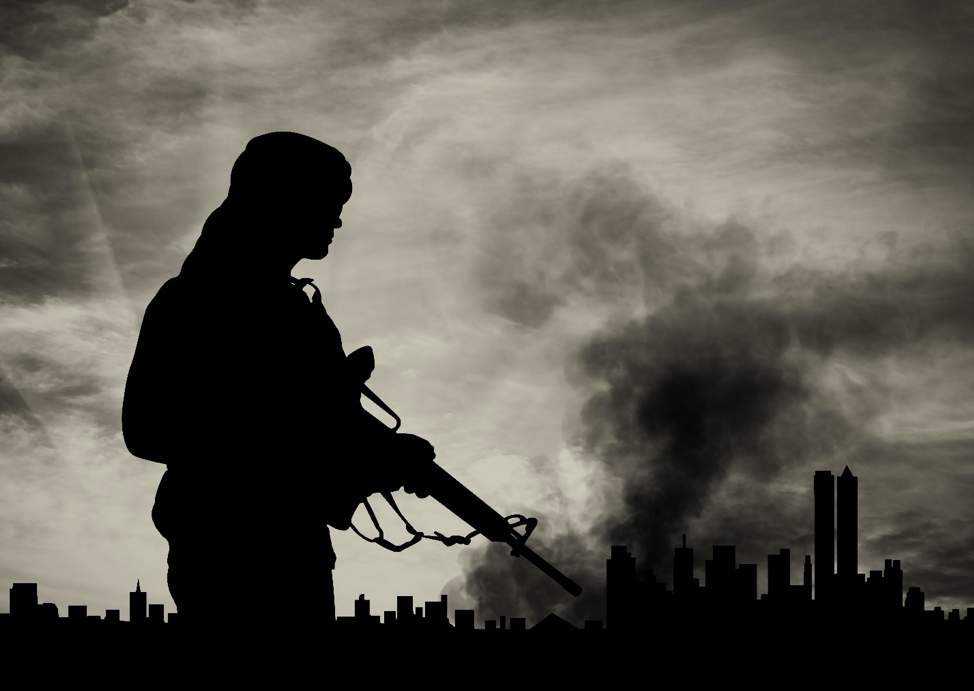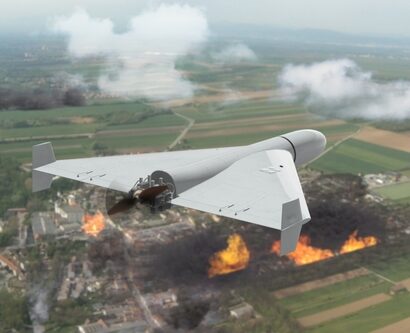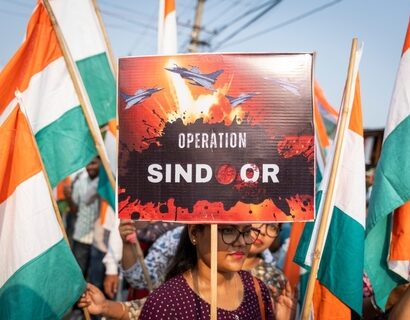Abstract: To combat the phenomenon of modern-day terrorism, it is necessary to understand its origin, various forms, transformations and strategies that have been developed to counter it. More importantly, it is also impartial to identify the mistakes that have been made along the way so as to eradicate them. The reasoning here is that the better grasp we have of the problem, the more sophisticated the weapons we have to combat it can be.
Bottom-line-up-front: In recent decades, society has fallen victim to one of the worst scourges: terrorism – an expressive act of violence that has occurred and recurred throughout history with varied forms of expression and cruelty.
Problem statement: How can the four development cycles of terrorism be understood in a historical context?
So what?: Effective and efficient counter-terrorism requires a holistic understanding of history and current status of terrorism as a foundation for the urgently needed “Whole of Nation(s) Approaches”.

Source: shutterstock.com/Parzis Images
Terrorism – A Recent Phenomenon?
Two months ago, specifically September 11, the 20th anniversary of the attacks against the United States (U.S.) was commemorated. The day not only changed the world, but its consequences are also still felt to this day. Those attacks were carried out by agents of the jihadist terrorist organization Al Qaeda, which at the time was led by Osama Bin Laden. The concept of terrorism and more specifically, terrorism of jihadist aetiology, made headlines on a global scale. Unfortunately, terrorism is not a new conception, and if we want to define an effective strategy to combat it, we must first delve into its history so as to know what we are up against. Apparently, the first known terrorist acts have their roots in religious fanaticism. Among the Zealots, a Jewish movement opposing Roman domination arose in the 1st century AD. As a complement to their criminal activity, the hitmen burned land and poisoned the wells that traditionally supplied Jerusalem with water.
The concept of terrorism and more specifically, terrorism of jihadist aetiology, made headlines on a global scale. Unfortunately, terrorism is not a new conception, and if we want to define an effective strategy to combat it, we must first delve into its history so as to know what we are up against.
Similarly, during the 11th and 12th centuries, the Shiite sect of the Ismailis gave rise to a gang of assassins that were characterized by their violent acts against Christian crusaders and by the conception of their crimes as authentic religious obedience operations. We can see how “terror” was already employed by the oldest peoples on earth.
Terror as a Type of Violence
The recourse to terror, together with attempts to politically justify it before any terrorized society gives a specific character to terrorist violence that distinguishes it from other forms. That is, terrorists consider the human being only as a means to achieve supposedly higher ends. Therefore, they produce unlimited suffering – affecting the most vulnerable and unprotected areas of society. Strictly speaking, modern terrorism first occurred during the French Revolution, when the Jacobin government headed by Robespierre established a regime of terror, proliferating summary executions to intimidate and subdue the population. It was later used in Great Britain when Sir Edmund Burke used qualifiers such as “fanatic,” “murderer,” “phony,” or “thief” to describe the “terrorist” whose actions were associated with political or ideological ends.[1]
Strictly speaking, modern terrorism first occurred during the French Revolution, when the Jacobin government headed by Robespierre established a regime of terror, proliferating summary executions to intimidate and subdue the population.
As a result, numerous states were accused of having committed terrorist activities to the point of being considered “terrorist states”. According to Hannah Arendt[2], the Nazi and Stalinist systems represented the highest degree of terrorist states in the 20th century, ones characterized by their systematic resort to terror.
However, from the end of the 19th century to today, the concept of terrorism, rather than state practices, has been applied more frequently to insurgent activities carried out by different violent organizations. The imperialist nationalism that led to the Meiji Restoration in Japan in 1868 was accompanied by frequent terrorist attacks on the Tokugawa shogunate. In the south of the USA, the Ku Klux Klan was created after the defeat of the Confederation of the South in the American Civil War (1861-1865) to terrorize former slaves and representatives of the administrations of the reconstruction imposed by the government.
One of the most prestigious historians of modern terrorism, David Rapoport, points out four terrorist waves with Tsarist Russia as the first in 1880 to today.
It was a violent practice deployed by various insurgent movements in different countries. Possibly, one of the most important terrorist groups in history in this wave was the Narodnaya Volya (People’s Will), who were active in Russia from January 1878 to March 1881, developing active campaigns against tsarist authorities. The main leader, Morozov, argued that terrorism was a new form of struggle preferable to generalized slaughter, the product of a mass insurrection.
In the late 19th century across Europe, supporters of anarchism carried out terrorist attacks against senior leaders and ordinary citizens. A notable victim was Empress Elizabeth of Austria, wife of Franz Joseph I, assassinated by an Italian anarchist in 1898, whose objective was to intimidate the agents of the State, the society as a whole or a part of it, in order to create an environment favorable to the ends that the terrorists pursue.
Out-of-Area, Anti-Colonial, Reactionary, Counter-Laicistic!
In the 20th century, groups such as the Internal Revolutionary Organization of Macedonia, the Croatian Ustashi, and the Irish Republican Army (IRA) often carried out terrorist activities outside the borders of their respective countries. This type of state-supported nationalist terrorism led to the murder of Franz Ferdinand of Habsburg in Sarajevo in 1914, which gave rise to the First World War.
The second wave of terrorism could be defined as an anti-colonial wave: it began in 1917 and came to an end in around 1965. Its fundamental justification was the vindication of the right to self-determination, its scope of action, on the other hand, was within the (national) borders. IRA in Ireland and the (National Liberation Front) FLN in Algeria are some of the main terrorist groups attributable to this wave.
The third wave of the new nationalist left began with the social unrest around 1968 and lasted until the 1980s. It was the contemporary wave that actually introduced international terrorism and the crossing of national borders which began in the 1960s. It was the time of the Cold War and was comprised of groups such as the Red Army Fraction (Germany), Red Brigades (Italy) Eta, Grapo (Spain), Black September (Palestine), Luminous Path (Perú). Kidnapping and hostage-taking became distinctive techniques of this period. As with the anarchist wave, the terrorists of the New Left chose high-level targets. Aircraft hijacking was frequently used to obtain large numbers of hostages for negotiations. As a significant fact, it should be noted that in just three decades there were more than 700 kidnappings.
Also, the tactic of assassinating heads of state or relevant figures typical of the first wave was assumed in the same period. The most relevant incident was the kidnapping and assassination of Italian Prime Minister Aldo Moro in 1979 at the hands of the Red Brigades after his government refused to negotiate the conditions imposed for his release. Other relevant targets included the British ambassador to Ireland, Prime Minister Margareth Thatcher, and King Hussein of Jordan. The difference with the anarchist wave lies within the motives. If in the first, the relevant figures were targeted simply due to the position they held, in the second the motive was punishment or revenge for actions or policies carried out against the ideology or interests of the group.
The fourth and last terrorist cycle, which we are currently in, is characterized by the proliferation of religious fundamentalist groups that seek the violent expansion of their own dogmas and the liquidation of those considered enemies to their faith. In this way, the “Other” becomes a legitimate target. No other distinction among targets is taken into account. Terrorism, then, becomes Bellum Omnium Contra Omnes, the war of all against all.
A Culture of Terror
The Fourth Wave suggests a Culture of Terror, which refers to a collapse – both physically and figuratively – of citizens, countries and governments. Religious terrorists create their own community or population, they are not worried about upsetting their supporters with their attacks. They view themselves as being accountable only to God and oppose any negotiation. As Morgan explains it, “Today’s terrorists don’t want a seat at the table; they want to destroy the table and everyone sitting at it”.[3]
Religious terrorists create their own community or population, they are not worried about upsetting their supporters with their attacks. They view themselves as being accountable only to God and oppose any negotiation.
In recent decades, society has been the victim of one of the worst scourges: terrorism, an expressive act of violence that has appeared throughout history (conquests, wars) with varied forms of expression and cruelty. Nations and international organizations must act united in their efforts to eliminate terrorism with multidisciplinary strategies and comprehensive approaches, embedding all instruments of power. Strategies must be implemented both in our cities and in distant countries. Education, healthcare, stable state structures as well as anti-corruption can help in the fight against terrorism. Similarly, the military and police will be necessary for this war.
Carmelo Jesus Aguilera Galindo is a graduate of law with a Masters in Security and Defense. The PhD student (University of Almería), is a Specialist in the analysis of Jihadist terrorism and insurgent movements (UPO, Pablo de Olavide University, Sevilla) as well as an expert in intelligence analysis (UNITAR_ Malaga University). As a contributing writer for the Islamic Theology of Counter-Terrorism, his particular focus is on jihadist terrorism. The views contained in this article are the author’s alone.
[1] Edmund Burke, Reflections on the Revolution in France (London: Citado por Tuman, 1790), 2-3.
[2] https://www.biografiasyvidas.com/biografia/a/arendt.htm.
[3] Matthew J. Morgan, “The Origin of the New Terrorism Parameters,” 2004, XXXIV (1), 30–31.






